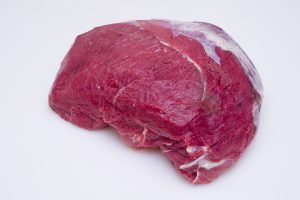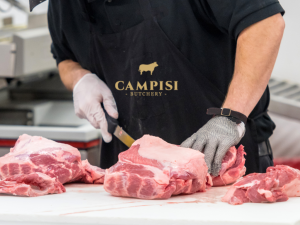Quality meat is the cornerstone of any delicious meal. Whether you’re grilling a steak, roasting a chicken, or simmering a stew, the quality of your meat directly impacts the flavor, texture, and overall enjoyment of your dish. High-quality meat tends to be more tender, flavorful, and nutritious, making your culinary efforts worthwhile. Moreover, choosing quality meat supports ethical farming practices, ensuring animals are raised in humane conditions.
Why Visit a Butcher Shop for Meat?
Visiting a butcher shop offers several advantages over buying meat from a supermarket. Butcher shops provide personalized service, expert advice, and a wider selection of cuts. Butchers are skilled in the art of butchery, ensuring that you get the best cuts of meat tailored to your specific needs. Additionally, butcher shops often source their meat from local farms, which can mean fresher, higher-quality products. Engaging with your local butcher allows you to learn more about the meat you’re purchasing and to make informed choices.
Understanding Cuts of Meat

Overview of Popular Cuts of Beef
Understanding the various cuts of beef is essential for selecting the right one for your cooking method. Here are some popular cuts of beef commonly found in a butcher shop:
- Ribeye: Known for its rich marbling and tenderness, perfect for grilling or pan-searing.
- Sirloin: A versatile cut that is leaner than ribeye, great for grilling, roasting, or stir-frying.
- Tenderloin: The most tender cut of beef, ideal for special occasions and best enjoyed as filet mignon.
- Brisket: A tough, flavorful cut that requires slow cooking or smoking to become tender.
- Chuck: A budget-friendly cut that is perfect for braising, stewing, or making ground beef.
Differences Between Various Cuts of Meat
Different cuts of meat come from various parts of the animal and vary in tenderness, flavor, and fat content. For example:
- Ribeye vs. Sirloin: Ribeye is more marbled and flavorful, while sirloin is leaner but still tender.
- Tenderloin vs. Brisket: Tenderloin is delicate and tender, suited for quick cooking methods, whereas brisket is tough and requires slow cooking.
- Chuck vs. Round: Chuck is more marbled and flavorful, making it ideal for slow-cooking, while round is leaner and best suited for roasting or making deli meat.
Visual and Sensory Indicators of Quality Meat
Color and Marbling: What to Look For
When selecting meat, color and marbling are key indicators of quality:
- Color: Fresh meat should have a bright, vibrant color. For beef, look for a rich red hue; for pork, a pinkish color; and for chicken, a pale pink. Avoid meat that appears dull or has a greyish tinge.
- Marbling: Marbling refers to the white streaks of fat within the meat. Good marbling indicates tenderness and flavor, as the fat melts during cooking, adding juiciness. Cuts of beef like ribeye or striploin should have visible marbling for the best taste and texture.
Texture and Smell: Key Sensory Checks
Texture and smell are also important when assessing meat quality:
- Textures: Quality meat should be firm to the touch, with a smooth, even surface. It should not feel slimy or sticky, as this can indicate spoilage.
- Smell: Fresh meat should have a mild, neutral smell. If the meat has a strong, unpleasant odor, it may be spoiled and should not be purchased.
Questions to Ask Your Butcher

Inquiring About the Source of Meat
Asking your butcher about the source of the meat can provide valuable information:
- Where is the meat sourced from? Understanding the farm or region where the meat comes from can give you insights into the quality and sustainability of the product.
- Is the meat organic or grass-fed? Knowing whether the meat is organic or grass-fed can help you make healthier and more ethical choices.
Understanding the Butchery Process and Aging
Inquiring about the butchery process and aging can help you select the best meat:
- How is the meat aged? Aging improves the flavor and tenderness of the meat. Dry-aged meat is hung in a controlled environment, developing a rich flavor, while wet-aged meat is aged in vacuum-sealed bags, retaining moisture.
- What cuts are available? Asking about the different cuts can help you discover new options and find the best meat for your recipe.
Certifications and Labels to Consider
Identifying Organic and Grass-Fed Labels
When choosing meat, understanding certifications and labels can help you make informed decisions:
- Organic: Organic meat comes from animals raised on organic feed, without synthetic pesticides or fertilizers, and without antibiotics or hormones. Look for labels like “USDA Organic” or “Certified Organic” to ensure the meat meets these standards.
- Grass-Fed: Grass-fed meat comes from animals that have been fed a natural diet of grass rather than grain. This can lead to higher levels of omega-3 fatty acids and a richer flavor. Labels such as “100% Grass-Fed” or “Grass-Finished” indicate the animal was fed grass throughout its life.
Understanding Certifications for Quality Assurance
Various certifications ensure the meat you buy meets high standards for quality and safety:
- Certified Humane: This certification ensures animals were raised in humane conditions with adequate space, shelter, and the ability to engage in natural behaviors.
- Animal Welfare Approved: This label indicates the highest standards for animal welfare, ensuring animals are raised outdoors on pasture or range.
- Global Animal Partnership (GAP): GAP provides a tiered certification system that rates farms on their animal welfare practices, from basic requirements to the highest standards.
The Role of the Butcher in Assisting Customers

How Butchers Help You Choose the Best Cuts
Butchers are valuable resources when it comes to selecting the right cuts of meat:
- Expert Recommendations: Butchers can recommend cuts of meat based on your cooking method, preferences, and budget. Whether you’re looking for a tender steak, a flavorful roast, or budget-friendly options, your butcher can guide you.
- Advice on Preparation: Butchers can provide tips on how to prepare and cook different cuts of meat to enhance flavor and tenderness. They can also suggest marinades, rubs, and cooking techniques.
Special Requests and Custom Cuts
One of the benefits of visiting a butcher shop is the ability to request custom cuts:
- Custom Sizes: If you need a specific size or thickness of meat, your butcher can cut it to your specifications. This is particularly useful for recipes that require precise portions.
- Specialty Cuts: Butchers can provide specialty cuts that may not be available at supermarkets. This includes cuts like tomahawk steaks, pork crown roasts, and lamb racks.
- Trimming and Deboning: Butchers can trim excess fat, debone, or butterfly cuts of meat, making it easier for you to prepare and cook at home.
Storing and Handling Meat Properly
Best Practices for Meat Storage at Home
Proper storage is essential to maintain the quality and safety of your meat:
- Refrigeration: Store meat in the coldest part of your refrigerator, typically the bottom shelf. Keep it in its original packaging or in a sealed container to prevent contamination.
- Use-by Dates: Pay attention to use-by dates and consume or freeze meat before it expires to ensure freshness and safety.
Tips for Freezing and Thawing Meat
Freezing and thawing meat properly helps preserve its quality:
- Freezing: Wrap meat tightly in plastic wrap or freezer paper, then place it in a freezer bag to prevent freezer burn. Label packages with the date and type of meat for easy identification.
- Thawing: Thaw meat in the refrigerator or in a bowl of cold water. Avoid thawing meat at room temperature, as this can promote bacterial growth. For quick thawing, use the defrost setting on your microwave, but cook the meat immediately after thawing.
Conclusion

Recap of Key Points for Choosing Quality Meat
Choosing high-quality meat involves several key steps:
- Visit a reputable butcher shop: Engage with your local butcher for expert advice and custom cuts.
- Understand cuts of meat: Know the differences between various cuts to select the best one for your needs.
- Look for quality indicators: Check for color, marbling, texture, and smell.
- Ask questions: Inquire about the source, butchery process, and certifications.
- Store and handle properly: Follow best practices for storage, freezing, and thawing.
Encouragement to Engage with Your Local Butcher Shop
Engaging with your local butcher shop not only ensures you get the best quality meat but also supports local businesses and sustainable practices. Take advantage of the expertise and personalized service offered by butchers to enhance your culinary experiences. Whether you’re preparing a simple weeknight dinner or a gourmet feast, high-quality meat from a trusted butcher shop can make all the difference.















